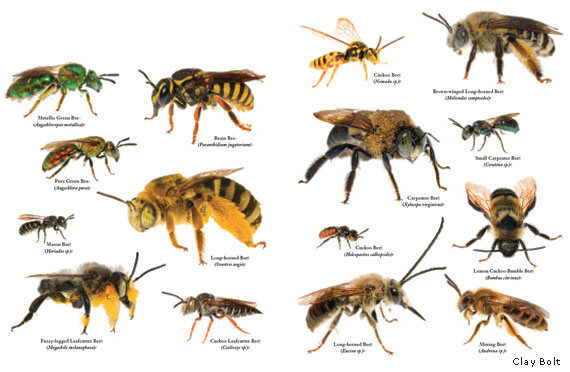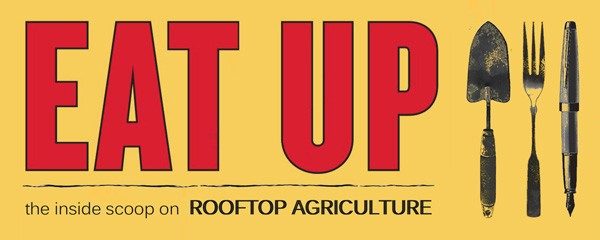more bees please

Rooftop beehive in north Philadelphia || photo by Lauren Mandel
Standing on the roof of SHARE Food Program in north Philadelphia, the audible hum of bee wing vibration is hypnotizing. Workers dart out of their hives to forage for pollen and nectar, others sluggishly return with caked pollen baskets, and those within the stacked wooden boxes flap incessantly to cool the hives for their queen. Up on a roof these canopy dwellers are right at home, and with so much activity buzzing around the hives, it’s hard to believe these bees, like their brethren throughout the country, have a slim chance of survival.
Since its importation to the U.S. in the mid-1600s, the European honey bee (Apis mellifera) has unequivocally shaped our food system, contributing more than $19.2 billion to the value of crop production within the U.S., according to a 2010 study by Cornell University researchers. While most agricultural crops are visited by a variety of pollinator insects, the American Beekeeping Federation notes that certain crops, like blueberries and cherries, are 90% dependent upon honey bees for pollination. Almonds possess the unique quality of being entirely dependent, requiring an annual importation of 1 million colonies, or 41% of all U.S. managed honey bee colonies, just to satisfy California’s crop.

Native Hunt’s bumble bee (Bombus huntii) visiting a sunflower || photo by Clay Bolt
Tragically (particularly for almond lovers), in 2006 the U.S. honey bee population began plummeting due to Colony Collapse Disorder (CCD), a syndrome resulting in the exodus and death of drones from the hive, leaving the queen and immature bees marooned, to perish. The definitive cause of CCD has yet to be scientifically determined, but speculations include parasites, pathogens, pests, poor nutrition, sublethal exposure to pesticides, climate change, and low genetic diversity, or some combination thereof. What a buzz kill.
But there’s hope! Enter North America’s 4,000+ native bee species. Do these insects have what it takes to pollinate our farm fields, yards, stoops, window boxes, and edible skylines? “According to scientists, natives are more than up to the task of filling in for beleaguered honey bees,” writes National Wildlife senior editor Laura Tangley in her provocative article, “Being there for the bees.” This diverse, rarely-studied group of insects co-evolved with many of North America’s native flowering plants and are therefore critical to our ecosystems and food supply. “In the United States alone, native bees contribute at least $3 billion a year to the farm economy,” says Mace Vaughan, an expert quoted in Tangley’s article. Native bees are solely responsible for pollinating crops such as tomatoes and eggplant, and much more efficient than honey bees at pollinating many native crops, like pumpkins, watermelons, blueberries, and cranberries.

Diverse native bee varieties || image by Clay Bolt
Taxonomically, all bees belong to the sub-order Anthophila and one of six families: Andrenidae (mining bees), Apidae (cuckoo, carpenter, digger, bumble, honey bees), Colletidae (plasterer bees, masked or yellow-faced bees), Halictidae (sweat bees), Megachilidae (leaf-cutter bees, mason bees, allies), and Melittidae (melittid bees). Unlike the honey bee, most native North American bees are relatively solitary in nature; nest underground, in hollow stems, or in dead wood; and don’t make honey. Their biggest threats to survival include disease, habitat loss, pesticide exposure, climate change, and most recently, insecticide spraying intended to target Zika-carrying mosquitoes. Despite these pressures, it’s conceivable that native bees’ incredible genetic diversity provides an advantage over the honey bee in resisting CCD. With more research, increased education about the habits and importance of native bees, and a ban on insecticide spraying, pollinator populations will hopefully stabilize.
Here’s how your rooftop farm or vegetable garden can help native bees and our food system:
- Provide nesting sites | Build or buy in a native bee nest (they’re beautiful!) for installation in your farm or garden, or on a nearby roof area. If you see ground-nesting native bees in your media, try to stay out of their way so they can do their job.
- Plant native flowering plants | Make sure a variety of native plants on your roof are booming from early spring through late fall to provide native bees with a variety of pollen and nectar sources. Long-blooming herbs offer a great supplement to vegetable plants.
- Offer a water source | Bees get thirsty! Make sure to provide a rooftop watering source so your pollinators don’t wonder off.
- Eliminate chemical use | Keep your rooftop farm or garden chemical free by avoiding synthetic insecticides, herbicides, fungicides, and fertilizers.
- Tell your friends | Don’t be shy about proselytizing what you’ve learned about supporting native bees! Make sure prospective growers know that your farm or garden is the bees knees.
 EAT UP
EAT UP